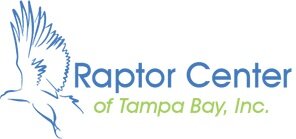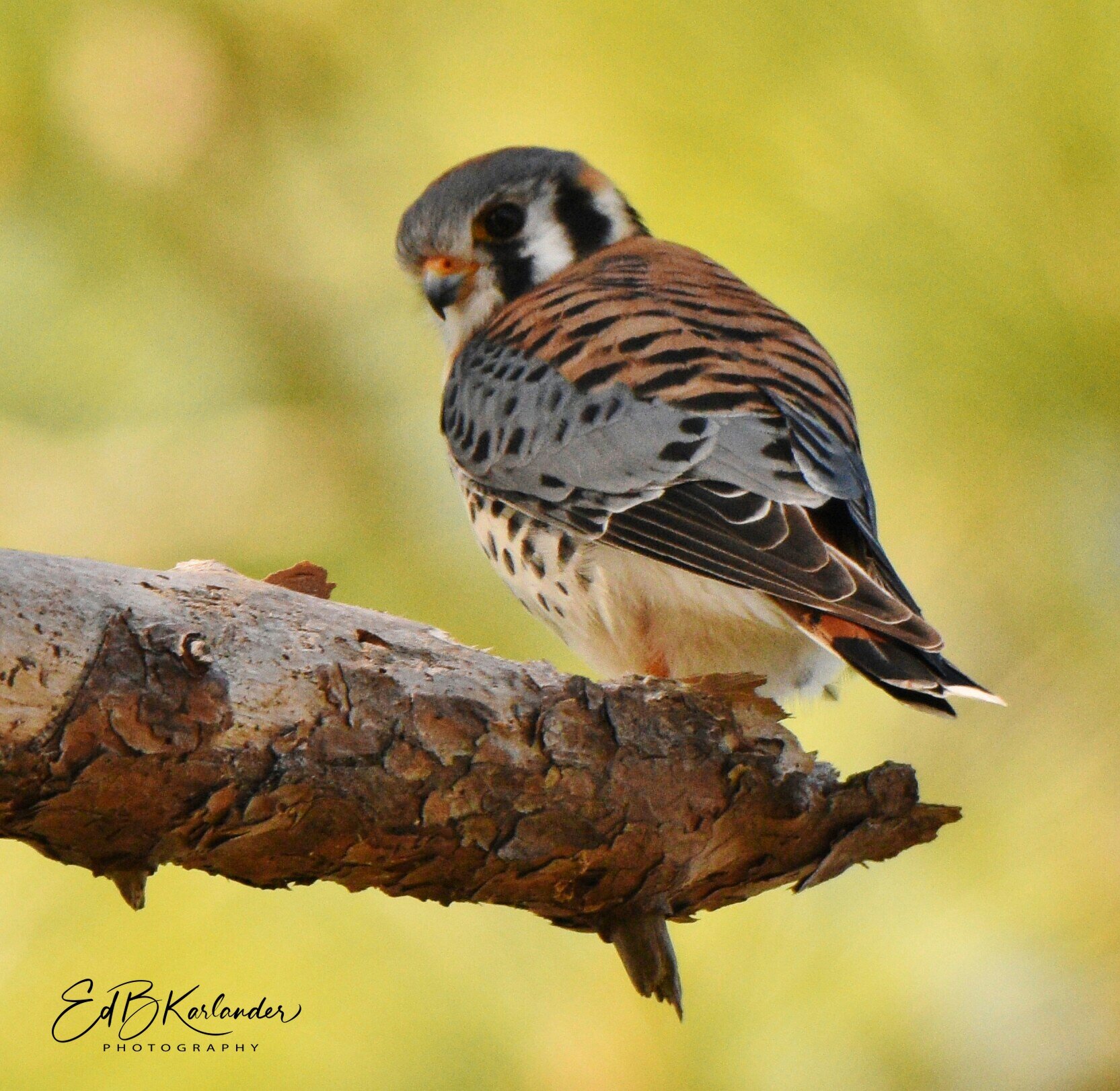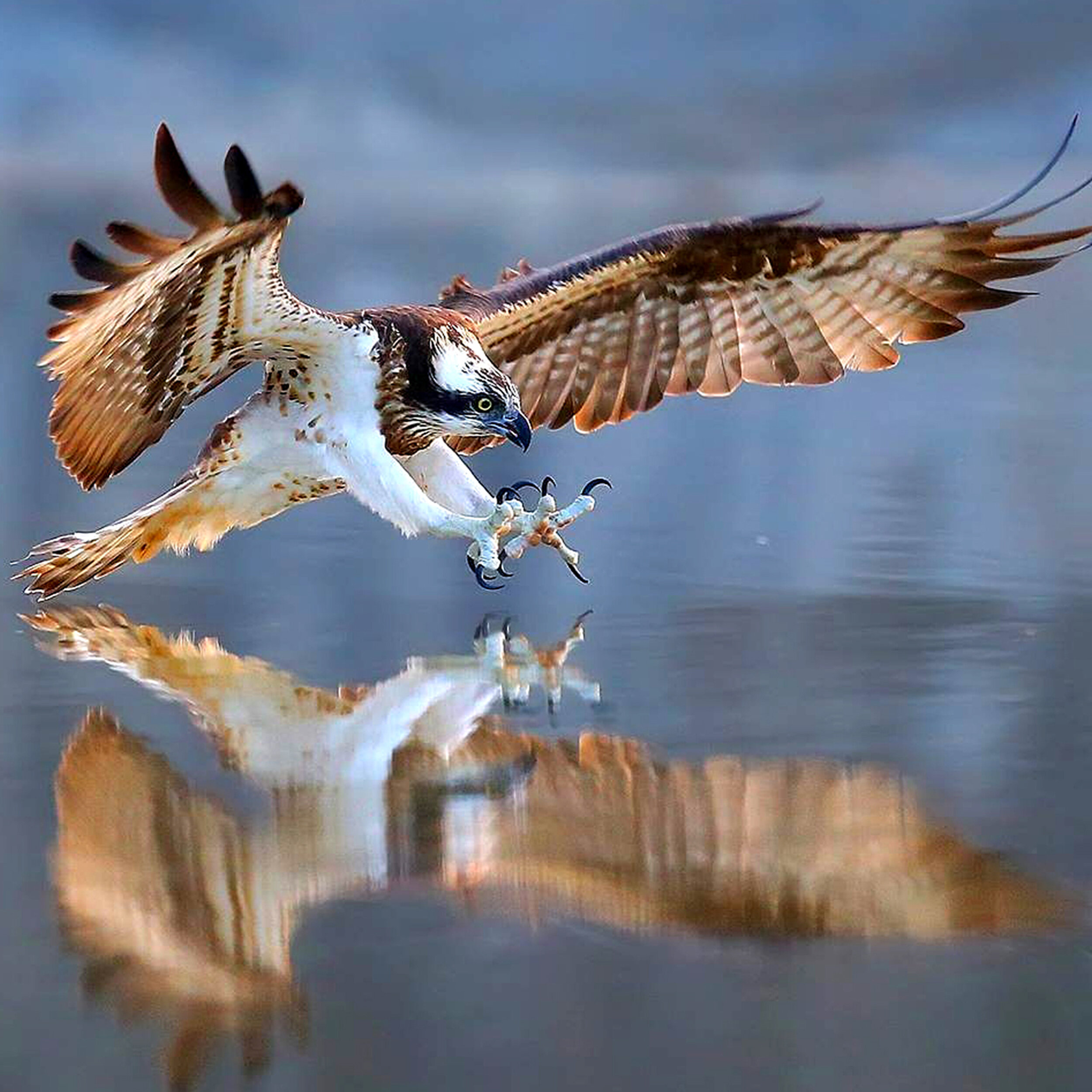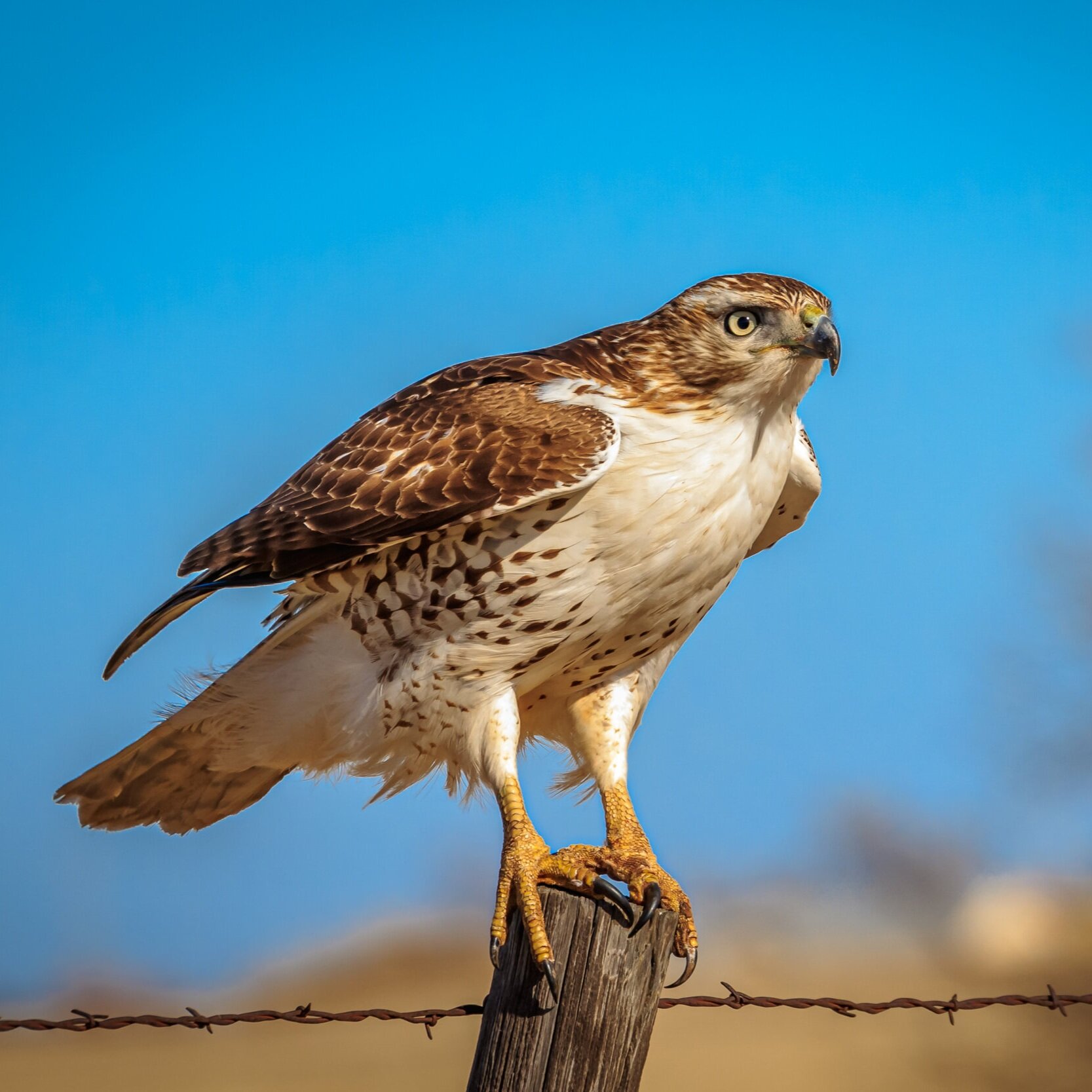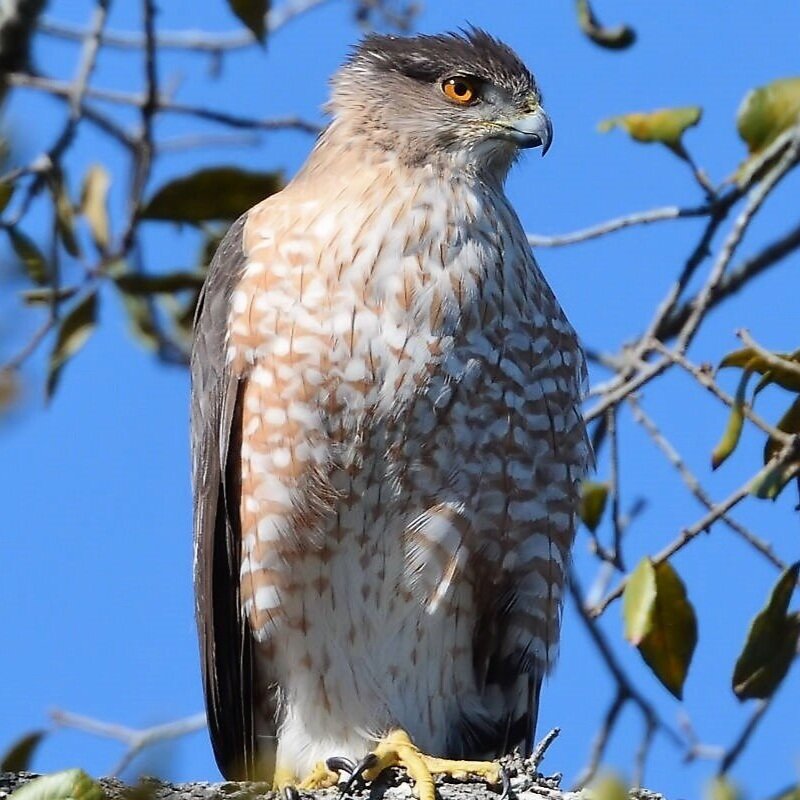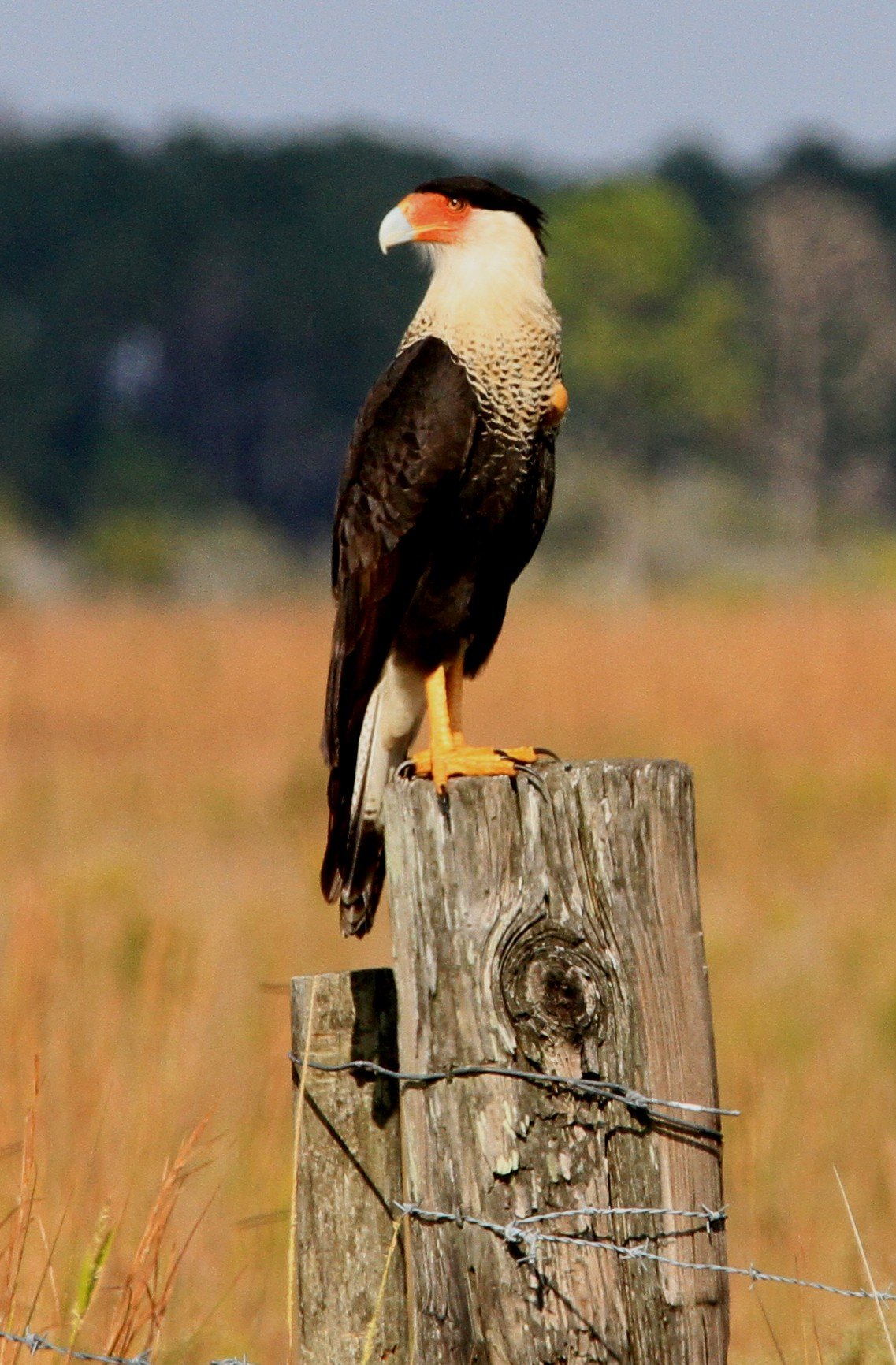
About Raptors
Who’s In Florida
To report a sick or injured bird, please call our hotline at 813-205-1851
The Many Feathered Friends that Call Florida Their Home
Florida is home top an amazing diversity of avian species, and the raptors certainly make a strong showing in the Sunshine State.
Read below for interesting information about some of the raptor species we work with when they are in need.
Bald or Golden Eagles
Eagles are the largest bird of prey that we have in Florida. In order to rescue a Bald Eagle you should be experienced handling them. We advocate always, if possible, having two people present at the rescue. We also request that if you receive a call for an eagle directly, immediately contact the center (813-205-1851). Eagles can run like vultures, especially juveniles. They bite and if they grab you with their feet, they have 350 pounds per square inch (PSI) gripping strength in each foot. If grabbed would you will need a second person to pull their talons out of you. Bald eagles can severely harm you or in a freak situation they can kill you. Unless you are experienced, please do not try to rescue one alone!
American Kestrels
The smallest falcon in North America and likely the only falcon that you will rescue in this area although Peregrine Falcons migrate through here in the spring and fall. Crested Caracara, found south and east of Hillsborough County are also considered a falcon. Like screech owls, kestrels are small but still can grab you and bite. They do not hurt as badly as a screech owl and all other larger birds of prey but they will draw blood. Their beak is sharp and is designed in such a way that allows them to break the necks of small birds and animals, killing them quickly. If they bite you, or grab you and you are not wearing gloves, it's going to hurt. They have small legs and are delicate birds. Use care when rescuing them and do not exert any force on their legs or wings, they can break. Use a smaller net if you have one. Kestrels become imprinted quickly. If you pick up a baby kestrel minimize contact with it. When we feed baby kestrels we feed them with a mirror in a camo tent so they cannot see us. This is important. They can become imprinted, when they are small almost instantly.
Osprey
Osprey, or fish hawks, only eat fish. Their talons are very long, curved and sharp. Because osprey can virtually hover over the water looking for fish, their eye sight as well as their wing structure and its strength are critical to their survival. As Osprey began to fledge, we pick up a lot of juveniles, especially in Pinellas County. These birds are not hard to rescue. They will typically fall over on their back and display their feet. That is your opportunity to grab them. If an osprey has a broken wing there is rarely an instance when we can save it. They are a bird that does not like to be in captivity so an unfixable (non-releasable) Osprey is rarely going to be a candidate for placement.
Red-Tailed Hawks
A large female red-tail can be as big as a small male eagle. They are very likely to try and grab you no matter how bad of shape they are in. They have big strong feet and long talons. Like Osprey and Eagles, these birds require a larger carrier. The Red-tailed Hawks that we rescue are typically very badly injured. These are birds that if non-releasable, if young they can be placed. These hawks are smart. When pursued they can hide masterfully. They will run from you and given the chance will tuck themselves up under bushes and stay perfectly still making it difficult to see them. Don't give up the rescue, keep looking! They are camouflaged well. Use caution when picking up a Red-tailed Hawk. If they foot you (grab you with their feet), most like you will need another person to help get the bird off of you.
Great Horned Owls
The flying tiger! They are the strongest bird of prey with 500 lbs. psi gripping strength in their feet. Their talons are shorter than an eagle and less curved. When we get calls on them they typically are not a hard rescue. The thing to remember with a Great Horned Owl is under NO circumstances let them grab you with their feet. They are much smaller than a bald eagle but make no mistake, their talons will go straight through your glove, your hand or fingers. Until you are comfortable handling raptors, these are best left to experienced rescuers.
Eastern Screech Owls
Small with very sharp talons and an amazingly strong grip for such a little bird. They can be very feisty. Like all owls, the screech owls click their beaks a lot. This is a sign they are upset. When you rescue them you actually want to hear that! When you pick up a screech, use a smaller net if possible. Frequently you will not need a net. Injured and sick screech owls tend to sit in one place with their eyes closed. Birds that don't open their eyes when you touch them, rarely survive. Frequently you can put a towel around them and pick them up. Small as they are wear gloves or you may be bleeding from little pin pricks where you had to pull their talons off your hand!
Make a donation.
Please consider making a one time donation or recurring monthly donations today! We rescue over 1,000 wild birds and animals each year. We’re all in this together!
Cooper’s Hawks
These birds are very high strung and act well . . . typically crazy! We get them out of pool cages and calls for them in buildings. When they are in a building we refer the company (they are usually in warehouses) to a falconer in the area who can legally trap them. Refer any call for a hawk in a building to your coordinator. Cooper's Hawks are smaller than Red Shouldered Hawks. They are extremely fast moving birds. When they are healthy a Cooper's Hawk can fly low and run through brush after other birds. Their diet is lots of birds and some small mammals. These birds tend to get themselves into all kinds of trouble. If they get the opportunity, they will grab you. They are difficult to manage in captivity. They can have problems in crates. They have long tails and should be transported with a tail guard. If a tail guard is not available, put a towel or pillow case on the inside of the crate door to minimize damage to the tail during transport. A bird that gets damaged feathers may have to wait until it molts to be released. Remember that can be up to a year increasing the cost of rehabilitating the bird exponentially.
Swallow-tailed or Mississippi Kites
Swallow-tailed kites are delicate birds. Their feet seem more like a parrots. They are small. Mississippi Kites are not common in this area. Rescue of either of these types of kites requires expertise. Like some other birds of prey, they are not difficult to catch and pick up. The Swallow-tailed Kite has an extremely long and delicate tail. A tail guard should be put on the bird prior to transport. Currently we take Swallow-tailed Kites to The Avian Reconditioning Center in Apopka Florida.
Black Vultures
They are extremely smart birds. They can run like lightening! Vultures are easier to rescue with 2 or 3 people. They can live on the ground injured for a long time. The longer they have been on the ground, the worse their lice are. A spritz of Adams flea Spray is helpful to kill them right away (be careful not to get in their eyes, nose or mouth). They run down in swampy areas and hide and you can easily lose track of them. It's not uncommon for us to have to go back twice to rescue one. Some (not all) vultures throw up as a defense mechanism. As you could well image, if they do the smell is awful. Vultures bite. They do not grab you with their feet but they will bite you given the chance. Get a hold of their head, as you were trained and don't hold them where they can reach your face! The hardest part of a vulture rescue is running them down. With a broken wing they will still jump 4-6 feet over fences if you let them. If you put them in a box, tape it up extremely well. They have been known to break out of cardboard boxes. A note on baby vultures. If you pick up a white fuzzy baby vulture, you must minimize any contact with them. These birds become imprinted quickly.
Turkey Vultures
They are big birds! Bigger than a black vulture they can be about the size of an eagle. Rescuing them is the same as a black vulture. We don't rescue as many Turkey Vultures as we do Black Vultures. These birds are migratory and do not usually breed here so we have not rescued any baby Turkey Vultures to date. Vultures & Crested Caracara can be extremely difficult to catch even when they are hurt badly. They can run 8-10 mph. You must have a net and be in good physical shape to go after them. If you have any type of disability that would put you at risk running after a bird that can out run you, out jump you and requires extra physical endurance, vultures or caracara should not be on your list of birds to rescue!
Barn Owls
They are a rarer owl in our area. At one time, these were the most common owl found though-out the world. Today their numbers have diminished as are their habitat and desired breeding locations, old Water Oaks, hollows of dead trees and of course in old barns, they are torn down. These owls are not a hard bird to rescue. They can grab you with their feet and if given the chance will bite you. Most calls for rescues are for old trees being cut down and they find babies inside.
Rarer Birds
In this area you may rescue are Peregrine Falcons (see Cooper's Hawk instructions) , Merlins (Kestrel Instructions) , Crested Caracara are harder to rescue than a vulture and always require more than one person, preferable 3-4 people to catch them. Golden Eagles (Bald Eagle Instructions), Sharp-shinned Hawks (Coopers), Northern Harriers or Snail Kites can come through this area although we have never rescued either.

